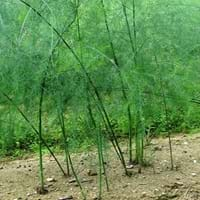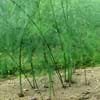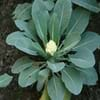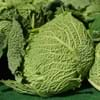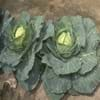Life Span
Perennial
Perennial
Type
Vegetable
Flowering Plants, Fruits, Trees
Origin
Southern Europe, Mediterranean
Anatolia, Asia, Europe, Iran, Maghreb, Morocco, Norway, The Hiamalayas
Types
garden asparagus , Sprenger's asparagus fern, White asparagus
Flowering Cherries, Sour Cherries, Sand Cherries, Sweet Cherries, Capulin Cherries
Habitat
Loamy soils, Well Drained
Forest edges, Wild, Woods
USDA Hardiness Zone
4-8
4-8
Sunset Zone
A1, A2, A3, 1a, 1b, 2a, 2b, 3a, 3b, 4, 5, 6, 7, 8, 9, 10, 11, 12, 13, 14, 15, 16, 17, 18, 19, 20, 21, 22, 23, 24
4, 5, 6, 7, 15, 16, 17
Habit
Not Available
Upright/Erect
Flower Color
White, Gold
White
Flower Color Modifier
Bicolor
Not Available
Fruit Color
Yellow green, Orange Red
Red
Leaf Color in Spring
Green, Dark Green
Dark Green
Leaf Color in Summer
Green, Purple
Orange
Leaf Color in Fall
Green, Purple
Orange
Leaf Color in Winter
Not Available
Orange
Leaf Shape
Lanceolate
Oblong
Plant Season
Spring, Summer, Fall
Spring, Summer
Sunlight
Full Sun
Full Sun, Partial shade
Growth Rate
Not Available
Medium
Type of Soil
Loam, Sand
Loamy, Well drained
The pH of Soil
Neutral, Alkaline
Slightly Acidic
Soil Drainage
Well drained
Average
Bloom Time
Late Spring, Early Summer, Summer
Early Spring, Spring
Tolerances
Full Sun, Humidity, Shallow soil
Heat And Humidity, Not Available
Where to Plant?
Container, Ground
Ground
How to Plant?
Stem Cutting
Grafting, Seedlings, Transplanting
Plant Maintenance
Medium
Medium
Watering Requirements
Keep the Soil well drained, Requires regular watering
Never Over-water, Over-watering can cause leaf problems or root diseases, Prefer drip-irrigation instead of Over-head watering, Water twice a day in the initial period
In Summer
Lots of watering
Lots of watering
In Spring
Moderate
Moderate
In Winter
Average Water
Average Water
Soil pH
Neutral, Alkaline
Slightly Acidic
Soil Type
Loam, Sand
Loamy, Well drained
Soil Drainage Capacity
Not Available
Average
Sun Exposure
Full Sun
Full Sun, Partial shade
Pruning
Cut away fading foliage
Don't prune in the fall, Prune if you want to improve plant shape, Prune in late winter, Remove dead or diseased plant parts, Remove deadheads
Fertilizers
14-14-14 Fertilizer, 8-8-8, All-Purpose Liquid Fertilizer, organic fertlizers
All-Purpose Liquid Fertilizer
Pests and Diseases
Crown rot, Foliage miners, Fusarium wilt, Leaf rust, Mites, Red blotch, Thripes
Aphids, Bacterial Canker, Black Knot, Brown Rot, Caterpillars
Plant Tolerance
Full Sun, Heat Tolerance, Shallow soil
Drought
Flowers
Insignificant
Yes
Flower Petal Number
Not Available
Not Available
Edible Fruit
Not Available
Yes
Fragrant Flower
Not Available
Yes
Fragrant Fruit
Not Available
Yes
Fragrant Leaf
Not Available
No
Foliage Texture
Fine
Not Available
Foliage Sheen
Not Available
Not Available
Attracts
Beetles, Bugs, Fishes
Birds
Allergy
allergic reaction, Mouth itching, Phytodermatitis, Rhinoconjunctivitis
Swelling in the face
Aesthetic Uses
Beautification, Showy Purposes
Showy Purposes
Beauty Benefits
Anti-ageing, Makes Hair Silkier, Promotes healthy skin
Not Available
Environmental Uses
Indoor Air Purification, Provides ground cover
Air purification
Medicinal Uses
Acne, Anemia, Menstrual Disorders, Nerve pain, Vitamin B, Vitamin E
Arthritis, Gout, Kidney problems, Rheumatoid arthritis, Swelling
Part of Plant Used
Shoots, Stem
Flowers, Fruits
Other Uses
Air freshner, Employed in herbal medicine, Leaves are used as mosquito repellent, Used for making wood alcohol
Wood is used for making furniture
Used As Indoor Plant
Sometimes
No
Used As Outdoor Plant
Yes
Yes
Garden Design
Edible, Herb / Vegetable
Not Available
Botanical Name
ASPARAGUS officinalis 'Jersey Knight'
Prunus avium
Common Name
Asparagus, Jersey Knight Asparagus
Cherry Tree
In Hindi
शतावर
चेरी का पेड़
In German
Gemüsespargel
Kirschbaum
In French
Asperge
Cerisier
In Spanish
Asparagus
Cerezo
In Greek
σπαράγγι
κερασιά
In Portuguese
Asparagus
árvore de cereja
In Polish
Szparag lekarski
wiśniowe drzewo
In Latin
Asparagus
Cherry
Phylum
Magnoliophyta
Magnoliophyta
Class
Liliopsida
Magnoliopsida
Order
Asparagales
Rosales
Family
Liliaceae
Rosaceae
Clade
Angiosperms, Monocots
Angiosperms, Eudicots, Rosids
Tribe
Not Available
Not Available
Subfamily
Asparagoideae
Not Available
Number of Species
Not Available
Importance of Asparagus and Cherry Tree
Want to have the most appropriate plant for your garden? You might want to know the importance of Asparagus and Cherry Tree. Basically, these two plants vary in many aspects. Compare Asparagus and Cherry Tree as they differ in many characteristics such as their life, care, benefits, facts, etc. Every gardener must at least have the slightest clue about the plants he wants to plant in his garden. Compare their benefits, which differ in many ways like facts and uses. The medicinal use of Asparagus is Acne, Anemia, Menstrual Disorders, Nerve pain, Vitamin B and Vitamin E whereas of Cherry Tree is Arthritis, Gout, Kidney problems, Rheumatoid arthritis and Swelling. Asparagus has beauty benefits as follows: Anti-ageing, Makes Hair Silkier and Promotes healthy skin while Cherry Tree has beauty benefits as follows: Anti-ageing, Makes Hair Silkier and Promotes healthy skin.
Compare Facts of Asparagus vs Cherry Tree
How to choose the best garden plant for your garden depending upon its facts? Here garden plant comparison will help you to solve this query. Compare the facts of Asparagus vs Cherry Tree and know which one to choose. As garden plants have benefits and other uses, allergy is also a major drawback of plants for some people. Allergic reactions of Asparagus are allergic reaction, Mouth itching, Phytodermatitis and Rhinoconjunctivitis whereas of Cherry Tree have Swelling in the face respectively. Having a fruit bearing plant in your garden can be a plus point of your garden. Asparagus has showy fruits and Cherry Tree has showy fruits. Also Asparagus is not flowering and Cherry Tree is flowering. You can compare Asparagus and Cherry Tree facts and facts of other plants too.
